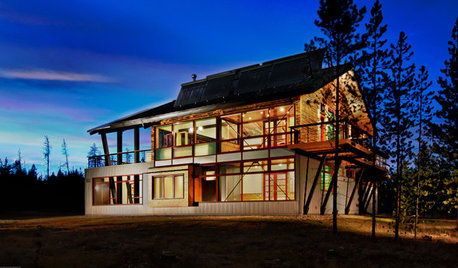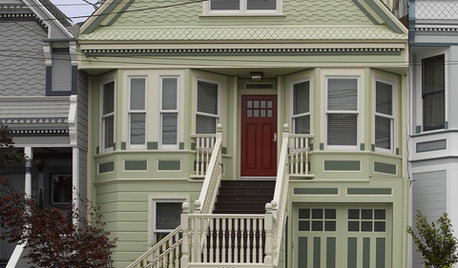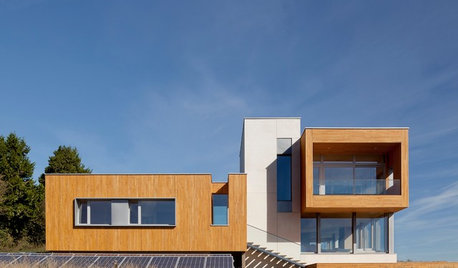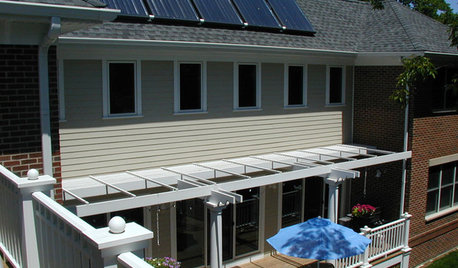Solar energy in CA., worth it?
bejay9_10
18 years ago
Related Stories

GREEN BUILDINGLet’s Clear Up Some Confusion About Solar Panels
Different panel types do different things. If you want solar energy for your home, get the basics here first
Full Story
GREEN BUILDINGZero Net Energy: A Hardworking-House Term to Know
Homes that consume only as much energy as they produce by renewable means are a goal for builders. Learn what ZNE means for you
Full Story
GREEN BUILDINGHouzz Tour: See a Concrete House With a $0 Energy Bill
Passive House principles and universal design elements result in a home that’ll work efficiently for the long haul
Full Story
GREAT HOME PROJECTSUpgrade Your Windows for Beauty, Comfort and Big Energy Savings
Bid drafts or stuffiness farewell and say hello to lower utility bills with new, energy-efficient windows
Full Story
HOUZZ TOURSHouzz Tour: Zero-Energy Renovated Victorian in San Francisco
A 1904 home that's entirely energy efficient? Yes, courtesy of solar panels, radiant heating and water reclamation
Full Story
GREEN BUILDINGGoing Solar at Home: Solar Panel Basics
Save money on electricity and reduce your carbon footprint by installing photovoltaic panels. This guide will help you get started
Full Story
SHOP HOUZZShop Houzz: Up to 65% Off Solar Garden Lighting
Bring a glow to your yard or garden with energy-saving solar lights
Full Story0

GREAT HOME PROJECTSHow to Add a Solar Water Heater
Lower energy bills without a major renovation by putting the sun to work heating your home’s water
Full Story
GREEN BUILDINGSunlight Used Right: Modern Home Designs That Harness Solar Power
Embracing passive heating principles through their architecture, siting and more, these homes save energy without skimping on warmth
Full Story
ARCHITECTUREArchitect's Toolbox: Solar-Powered Design
See how your home's design can take advantage of the sun's natural energy all year
Full Story





sputnikfarm
euphorbphreak
Related Discussions
Analysis of Renewable Energy Opportunities for Indian Entreprene
Q
Solar-assisted heat worth the trouble?
Q
Is a Variable Speed Pump Worth the Investment
Q
Congress extends 30% tax credit for solar
Q
gardenguru1950
joereal
joereal
bejay9_10Original Author
joereal
joereal
Heathen1
loneranger
joereal
joereal
redrover
lola1
Aegis
Pookiesmom
joereal
lola1
ljrmiller
sputnikfarm
bejay9_10Original Author
Pookiesmom
Aegis
lola1
euphorbphreak
lola1
joereal
JXBrown (Sunset 24, N San Diego County)
onafixedincome
arvind
habitat_gardener
sputnikfarm
spambdamn_rich
justmeguy
rosefolly
jakkom
rosefolly
justmeguy
PoPazza
CA Kate z9
rosefolly
Dick_Sonia
jakkom